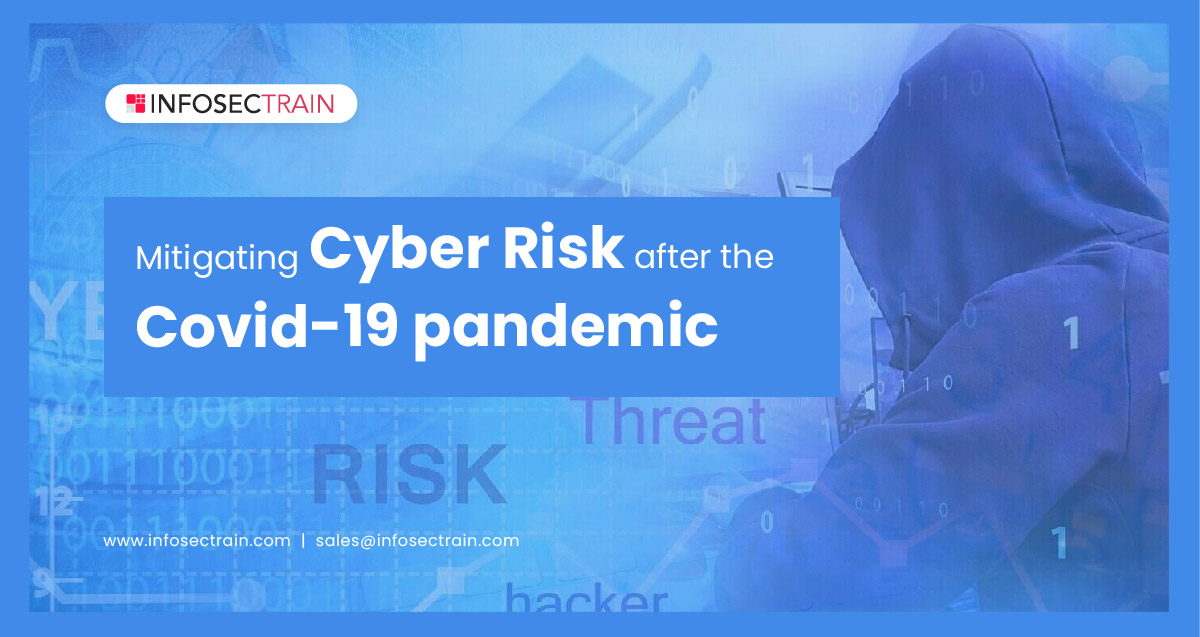Mitigating Cyber Risk After the Covid-19 Pandemic
The way individuals live, study, shop, work, and how businesses operate has changed dramatically since the coronavirus pandemic began in 2019. The Covid-19 pandemic has wreaked havoc on businesses of all sizes and sectors all over the world, posing unforeseen obstacles.

People and businesses have migrated a vast deal of activity into the digital realm in a world that now necessitates solitude. In the last two years, we have relied on digital platforms at an unprecedented rate to interact and work. The majority of people remain at home, doing business, schoolwork, and other activities such as shopping, reading, chatting, playing, and streaming movies using various digital technologies such as cloud technology, video conferencing services, and collaboration platforms.
Cybercriminals view such technology as a far bigger and more valuable target. With the advancement of technology, cybercriminals have become more advanced and sophisticated. The cyber threat landscape has changed with the changing nature of cyberattacks. Therefore, cybersecurity efforts need to be upgraded to prevent a security crisis from emerging.
So in this article, we have covered various ways of mitigating cyber risk after the Covid-19 pandemic.
How to mitigate cyber risk after the Covid-19 pandemic?
Although we cannot totally eliminate the threat of cyberattacks, we may take steps to minimize and reduce the risk of these sophisticated cyberattacks. Some of the ways of mitigating cyber risk after the Covid-19 pandemic are:
- Cybersecurity awareness: It is the first and most important step in avoiding cybersecurity threats. How would you deal with something you have no idea about? You can not, can you? Everyone, including general users, should be informed about appropriate practices and processes for sending emails and other content to private email accounts and cloud storage.
- Antivirus protection: Antivirus and malware protection software should be installed on all personal computers. This does not give failsafe protection, but it does prevent many low-level threats.
- Using advanced technology: Advanced threat detection and response capabilities, backed by next-generation technologies like big data, artificial intelligence, and machine learning, are required. These are required to recognize and respond to negative conduct at machine speed without the use of humans. Organizations will also want to look at insurance to cover losses caused by hackers during a pandemic.
- Using VPN: Virtual private networks provide an additional layer of security for internet use at home. They cannot be relied on to prevent cyberattacks on their own, but they can serve as an effective deterrent. Everyone, including organizations, may benefit from some simple cybersecurity tactics.
- Control over the network: For many years, cybersecurity experts have concentrated their efforts on securing the network’s perimeter. As threat actors improved their penetration skills, the industry doubted this concept. The problem now is figuring out how to set up remote work solutions without introducing additional infiltration points into the core network.
- Understanding your IT resources: You should be aware of your IT resources. IT requires open lines of communication for recognizing, confronting, and resolving business issues in a way that does not jeopardize the organization’s data and networks’ safety and security.
- Identifying vulnerabilities and loopholes: All systems have flaws. Businesses should conduct testing to discover vulnerabilities and repair the most serious ones as quickly as possible. Vulnerability scanning or various forms of penetration testing exercises are examples of this.
- Zero-trust approach: CISOs and CIOs should think about creating a zero-trust cybersecurity strategy. Only authenticated and authorized users and devices are allowed access to apps and data in this security paradigm, and it questions the notion of “default access.”
- Risk management: For better risk management, businesses can use Governance, Risk, and Compliance (GRC) systems. GRC solutions give a comprehensive picture of a company’s risk exposure and assist and connect the various risk disciplines.
- IAM practices: In this threat landscape, secure access management strategies such as IAM and PAM must be employed, as the threat of identity theft has escalated, resulting in data loss and breaches.
How can InfosecTrain help you?
The coronavirus pandemic and the rise in home-based work were cited as important factors. Preparedness is essential for successfully lowering cyberattack risks, and the ability to react swiftly to unexpected occurrences reduces the severity of a cyberattack. You can learn ways to mitigate these cyber risks by enrolling in InfosecTrain’s various cybersecurity training programs like CompTIA Security+, CEH, CCSP, and others.





 1800-843-7890 (India)
1800-843-7890 (India) 
